Minimalism for Busy Professionals: Simplify Your Life Today
Category: Lifestyle
Why Minimalism Is the Game-Changer Busy Professionals Need
If you're a busy professional feeling overwhelmed by constant demands on your time and energy, you've likely considered how simplifying your life could bring clarity and calm. But the challenge lies in knowing where to start and how to adopt minimalism in a way that truly fits your hectic schedule and responsibilities. You’re not searching for generic advice; you want practical, actionable strategies that respect your expertise and the reality of your fast-paced life.
This post is crafted precisely for you—the professional navigating endless deadlines, juggling personal and work life, and yearning for a more intentional, less cluttered existence. We’ll dive deep into minimalist principles framed specifically for people who don’t have hours to spare but want meaningful change. Unlike other articles that skim the surface, here you’ll find a logical roadmap from mindset shifts to daily habits and smart decluttering techniques tailored for your lifestyle.
By the end, you'll see how minimalism isn't about deprivation but about reclaiming your time, energy, and focus in a way that powers your professional and personal growth. Let’s explore a minimalist approach that works with your demanding life instead of against it.
- Why Minimalism Is the Game-Changer Busy Professionals Need
- Understanding Minimalism: What It Means for Busy Professionals
- The Busy Professional's Mindset Shift: Prioritizing What Truly Matters
- Simple Decluttering Strategies That Fit Your Schedule
- Streamlining Your Workspace for Maximum Productivity
- Minimalism in Time Management: Prioritizing and Scheduling with Intent
- Digital Minimalism: Managing Notifications, Emails, and Social Media
- Minimalist Finances: Simplifying Budgeting and Spending Habits
- Creating Sustainable Minimalist Habits for Long-Term Success
- Balancing Professional Demands and Personal Minimalism: Tips for Communication and Boundary-Setting
- Resources and Tools to Support Your Minimalist Journey
Understanding Minimalism: What It Means for Busy Professionals
Minimalism often gets reduced to a trendy lifestyle buzzword, conjuring images of stark white spaces and empty shelves. But for busy professionals, minimalism is far more than just decluttering physical possessions—it's a comprehensive mindset that prioritizes simplicity, intentionality, and focus across every aspect of life. At its core, minimalism is about eliminating distractions and excess so you can concentrate your limited time and energy on what truly matters, both professionally and personally.
Why does this matter for time-starved individuals? Because overcommitment, multitasking, and information overload drain productivity and increase stress. Minimalism offers a clear antidote: by consciously choosing fewer commitments, simplifying workflows, and reducing mental clutter, you create space for meaningful work and restorative downtime. This approach doesn’t demand radical life changes or sacrifice; instead, it encourages smart choices that align with your values and goals. For busy professionals, embracing minimalism means:
- Streamlining your environment and digital tools to reduce distractions
- Prioritizing tasks that deliver the highest impact rather than reacting to every demand
- Setting boundaries that protect your focused work periods and personal time
- Cultivating habits that enable consistent simplicity without extra effort
In essence, minimalism becomes a strategic asset—a method to regain control over your schedule and mindset amid the chaos, enabling greater clarity, efficiency, and fulfillment in your career and life.

Image courtesy of Mariah Green
The Busy Professional's Mindset Shift: Prioritizing What Truly Matters
For busy professionals, adopting minimalism begins with a fundamental mindset shift—a conscious recalibration of values to focus on what truly brings meaning and impact to both work and life. In the whirlwind of deadlines, meetings, and endless to-dos, it’s easy to lose sight of your core priorities, leading to mental clutter and decision fatigue. The key is to intentionally realign your mental and emotional energy toward goals that foster growth, fulfillment, and sustainable success rather than simply reacting to every demand or distraction.
How to Recalibrate Your Values for Meaningful Focus
-
Identify Your Non-Negotiables: Reflect on what aspects of your career and personal life are genuinely indispensable. This might include delivering quality work, nurturing relationships, or maintaining health. Write these down and use them as your north star when evaluating new tasks or commitments.
-
Implement the "Essential vs. Optional" Filter: Before saying "yes" to requests or projects, quickly assess whether they align with your core priorities. If not, consider deferring, delegating, or declining to safeguard your limited time.
-
Set Clear Intentions Daily: Begin each workday by identifying 1-3 meaningful goals that align with your values. Focusing on fewer, high-impact objectives prevents the overwhelm caused by multitasking and scattered focus.
-
Practice Mental Decluttering: Use mindfulness or journaling to clear mental noise and anxieties that distract from your priorities. This strengthens your ability to remain present and engaged in meaningful work.
By embedding these strategies into your busy professional life, you reduce cognitive overload and redirect your efforts toward pursuits that genuinely matter. This prioritization mindset not only elevates productivity but also cultivates a sharper sense of purpose and well-being—a cornerstone of successful minimalism for professionals on the go.

Image courtesy of cottonbro studio
Simple Decluttering Strategies That Fit Your Schedule
For busy professionals, decluttering doesn’t have to mean dedicating entire weekends or disrupting your workflow. The secret to effective decluttering lies in quick, efficient techniques tailored to your limited time and high-paced routine. By tackling clutter in manageable bursts, you avoid overwhelm while steadily creating a more streamlined, distraction-free environment both physically and digitally.
Quick Physical Decluttering Tactics
- The 5-Minute Sweep: Set a timer for just five minutes each day to clear your desk or a small area like a drawer or shelf. Focus on removing items you no longer use or need. This incremental approach prevents clutter from piling up while fitting seamlessly into your schedule.
- One-In, One-Out Rule: For every new item you bring into your workspace or home, remove one unnecessary object. This simple habit keeps possessions in balance and curbs accumulation without requiring a big purge.
- Containerize Essentials: Use trays, baskets, or drawer dividers to keep frequently used items neatly contained. This minimizes visual clutter and speeds up organization, helping you find what you need quickly.
Efficient Digital Decluttering Methods
- Inbox Zero Mini-Sprints: Dedicate 10 minutes each day to clearing emails with a clear process—delete, archive, respond, or delegate. Consistent micro-sessions prevent inbox overload and reduce cognitive distractions.
- Desktop Detox: Limit your desktop icons to only daily-use files or shortcuts. Archive or delete outdated files regularly to maintain a clean, focused workspace on your computer.
- App Audit: Periodically review your applications on devices and uninstall those you rarely use. Fewer apps reduce notifications and improve device performance, helping you maintain digital clarity.
Implementing these bite-sized decluttering strategies transforms minimalism from an intimidating project into an achievable routine. By simplifying your physical and digital spaces without consuming large chunks of time, you create a foundation for increased focus, productivity, and peace of mind—key benefits every busy professional needs.
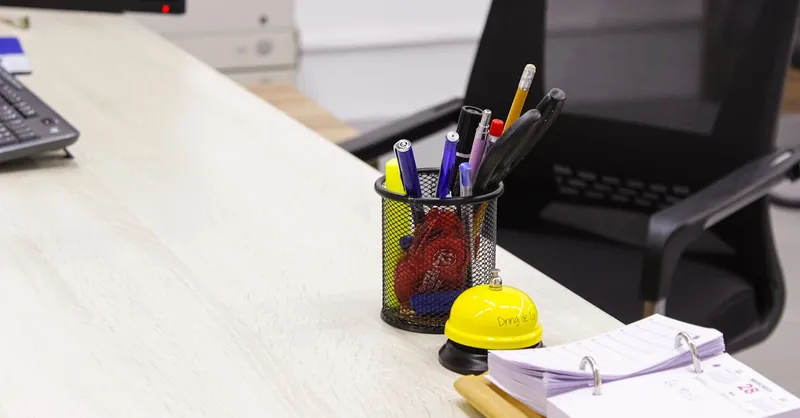
Image courtesy of Jean Haifa
Streamlining Your Workspace for Maximum Productivity
Creating a minimalist workspace is a powerful strategy for busy professionals seeking to enhance focus, reduce stress, and boost overall productivity. A cluttered or disorganized environment invites distractions, fragments attention, and drains valuable cognitive resources. By streamlining your physical and digital workspace, you can cultivate a setting that supports deep concentration and efficient task completion.
Practical Tips to Create a Minimalist Workspace
-
Limit Your Desk Essentials: Keep only the tools and items you use daily within arm’s reach. This might include a notebook, pen, computer, and perhaps one or two personal touches like a plant or a photo. Removing unnecessary objects reduces visual clutter and frees mental space.
-
Adopt a “Clear Desk” Habit: At the end of each workday, spend a few minutes resetting your desk to a clean, orderly state. This ritual signals closure and primes your mind for a fresh start the next day.
-
Optimize Storage Solutions: Use drawers, shelves, or minimalist organizers to store less frequently used items out of sight but within easy access. Keeping surfaces clear improves flow and creates a serene work atmosphere.
-
Utilize Cable Management: Tangled cords contribute to visual chaos and frustration. Invest in cable clips, sleeves, or wireless options to maintain a tidy, streamlined look.
-
Digitize Paperwork: Minimize paper clutter by scanning important documents and organizing them in clearly labeled digital folders. This not only saves space but also accelerates document retrieval.
-
Prioritize Digital Cleanliness: Regularly organize your computer desktop, bookmarks, and task management apps to prevent digital clutter from undermining your focus. Simple interfaces and minimized notifications are key to sustaining attention.
By intentionally designing a workspace that embodies minimalist principles, busy professionals empower themselves to work smarter—not harder. A clean, organized environment becomes an extension of your focused mindset, enabling sharper decision-making, faster task execution, and a calmer, more enjoyable workday experience. Embracing these workspace streamlining techniques is an essential step in leveraging minimalism to reclaim your time and mental clarity in a demanding professional world.
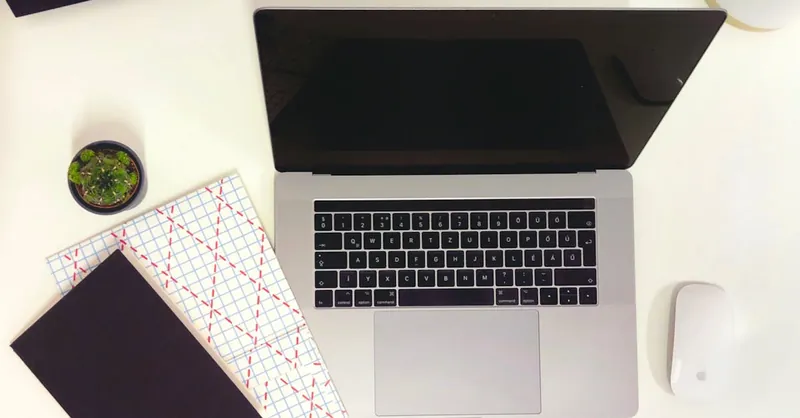
Image courtesy of David
Minimalism in Time Management: Prioritizing and Scheduling with Intent
For busy professionals, effective time management is the cornerstone of minimalism—it transforms a chaotic calendar into an intentionally crafted schedule that supports your highest priorities and well-being. Minimalism in time management means deliberately choosing where to invest your limited hours and energy, cutting out non-essential commitments, and creating space for deep, focused work as well as restorative downtime.
Tools and Methods to Simplify Your Calendar
-
The Power of Intentional Scheduling: Begin by blocking out dedicated time for your top priorities first—whether that’s strategic project work, critical meetings, or personal wellness activities. Treat these blocks as non-negotiable appointments to respect your focus and energy.
-
Time-Blocking Technique: Divide your day into chunks allocated to specific tasks or themes, such as creative work, administrative tasks, or communication. This reduces decision fatigue and multitasking by providing clear boundaries around activities.
-
The “Less is More” Approach to Commitments: Before accepting meetings or additional projects, apply the priority filter established earlier—does this align with your essential goals? If not, delegate, defer, or decline to protect your schedule from overload.
-
Utilize Minimalist Digital Tools: Simplify your task and calendar management by choosing streamlined apps that sync across devices and avoid feature bloat. Tools like Google Calendar, Todoist, or Notion can keep your schedule organized without overwhelm.
-
Batch Similar Tasks: Group routine or low-focus tasks—like email responses, calls, or admin work—into specific time blocks instead of switching between different demands throughout the day. This enhances efficiency and protects time for high-impact activities.
-
Set Boundaries Around Work Hours: Define clear start and end times for your workday to prevent burnout and maintain a healthy work-life balance. Communicate these boundaries with colleagues to manage expectations respectfully.
By applying these minimalist time management strategies, you create a streamlined, purpose-driven calendar that aligns with your priorities and maximizes productivity. This intentional simplification not only decreases stress but also empowers you to focus on what truly matters, ensuring your time is a valuable asset—not an uncontrollable liability.
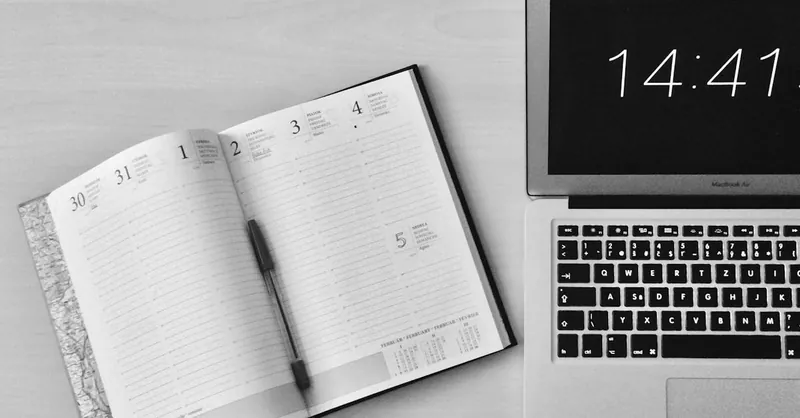
Image courtesy of Michaela
Digital Minimalism: Managing Notifications, Emails, and Social Media
In today’s hyperconnected world, digital distractions like constant notifications, overflowing emails, and social media interruptions can effortlessly consume hours of your valuable time and fragment your focus. For busy professionals embracing minimalism, digital minimalism—intentionally managing your digital environment—is essential to regaining control over how you interact with technology and reclaiming mental space for high-impact work.
Strategies to Regain Control Over Digital Distractions
-
Customize and Limit Notifications: Disable non-essential notifications on your smartphone, computer, and apps. Only allow alerts from priority contacts or critical apps to ensure you are not repeatedly pulled away from your high-value tasks by trivial updates.
-
Implement Scheduled Email Checks: Instead of responding to every incoming email immediately, designate specific times during the day—such as mid-morning and late afternoon—to process your inbox. This minimizes constant task-switching and improves focus.
-
Use Email Filters and Folders: Set up rules to automatically sort incoming emails into categorized folders (e.g., Urgent, Newsletters, Projects). This declutters your primary inbox and lets you prioritize important messages without distraction.
-
Apply the “Two-Minute Rule”: For emails or digital tasks that can be completed in under two minutes, take immediate action. For longer items, defer or schedule dedicated time, reducing backlog without overloading your day.
-
Declutter Social Media Usage: Be intentional about your social media engagement by unfollowing or muting accounts that do not add genuine value. Limit daily social media time with app timers or focus modes to prevent endless scrolling.
-
Leverage Minimalist Apps and Tools: Opt for streamlined tools that enhance productivity without unnecessary features. For example, use distraction-free writing apps, simple task managers, or focused browsers that block distracting websites during work hours.
By adopting these digital minimalism practices, busy professionals can dramatically reduce the noise vying for their attention, reclaim uninterrupted focus, and maximize productivity. Instead of technology controlling your day, intentional digital habits empower you to harness tools in service of your priorities—making digital minimalism a cornerstone for simplifying your professional life and achieving meaningful results.
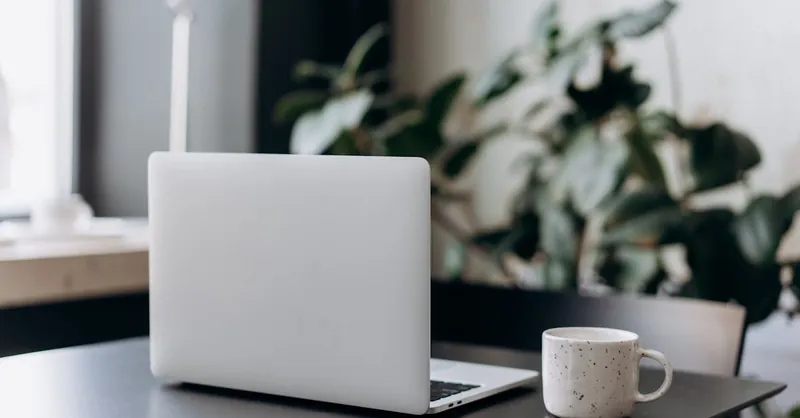
Image courtesy of Mikhail Nilov
Minimalist Finances: Simplifying Budgeting and Spending Habits
Financial stress is a silent productivity killer for many busy professionals, often draining mental energy and clouding focus. Embracing minimalist finance habits not only promotes financial freedom but also reduces stress by helping you spend intentionally, budget simply, and eliminate money-related clutter. Minimalism in finance is about aligning your spending with your core values and goals, cutting unnecessary expenses, and creating a streamlined budgeting system that doesn’t overwhelm your already packed schedule.
How to Adopt Minimalist Finance Habits
-
Create a Simple, Value-Based Budget: Instead of complex spreadsheets, design a straightforward budget that prioritizes essential expenses—like housing, food, savings, and investments—and limits discretionary spending. Use broad categories to reduce micro-managing and focus on what truly matters financially.
-
Automate Savings and Bill Payments: Automating recurring expenses and contributions to savings accounts or retirement plans removes decision fatigue and prevents late fees. This minimalist approach frees up mental bandwidth and ensures consistent progress toward your financial goals.
-
Track Spending with Minimal Effort: Use user-friendly budgeting apps or simply review your bank statements monthly to monitor spending patterns. The goal isn’t micromanagement but maintaining awareness so you can quickly adjust if spending drifts from your priorities.
-
Adopt the “Conscious Spending” Mindset: Before making purchases, pause to ask if the expense aligns with your values and adds genuine value to your life or work. This habit curtails impulse buying, strengthens intentionality, and increases satisfaction with your financial choices.
-
Eliminate Financial Clutter: Simplify your accounts by consolidating where possible—fewer credit cards, bank accounts, and investment platforms make managing finances less complex. Additionally, cancel unused subscriptions or memberships that do not provide meaningful benefits.
-
Build an Emergency Fund and Invest Simplicity: Prioritize establishing a safety net that covers 3-6 months of expenses to reduce anxiety during unforeseen events. Complement this with simple, low-maintenance investment strategies such as index funds or robo-advisors to grow wealth without constant oversight.
By integrating these minimalist financial practices, busy professionals gain not only clearer control over their money but also the freedom to channel energy away from financial worries toward career and life priorities. Simplifying your finances is a powerful form of minimalism that cultivates peace of mind, supports long-term stability, and empowers you to focus on success without distraction.
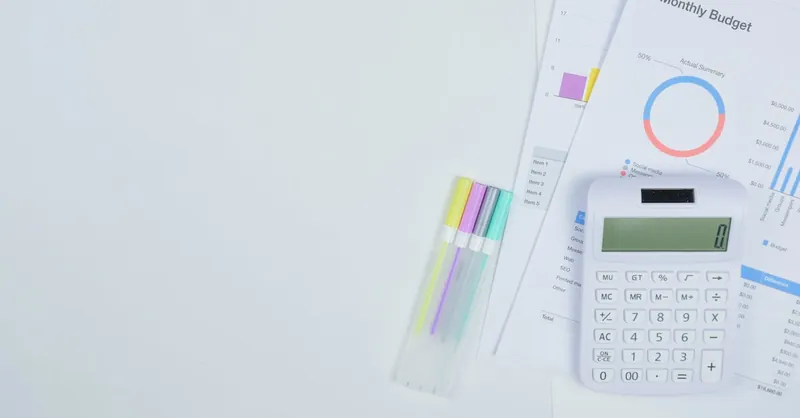
Image courtesy of Kindel Media
Creating Sustainable Minimalist Habits for Long-Term Success
Adopting minimalism as a busy professional isn’t about quick fixes or radical overhauls—it’s about cultivating realistic, maintainable habits that seamlessly integrate into your demanding lifestyle. Sustainable minimalist habits empower you to consistently simplify without added stress, ensuring long-term success and lasting benefits.
Building Realistic Minimalist Habits That Stick
-
Start Small and Build Gradually: Instead of trying to overhaul your entire life at once, focus on one minimalist habit at a time. Whether it’s a daily 5-minute decluttering session, intentional scheduling, or digital detox routines, incremental changes reduce resistance and foster steady progress.
-
Anchor Habits to Existing Routines: Tie new minimalist behaviors to daily or weekly activities you already practice. For instance, reset your workspace before shutting down your computer each day or schedule your email review right after morning coffee. This habit stacking increases adherence by leveraging your current rhythms.
-
Set Clear, Measurable Goals: Define specific outcomes for your minimalist practices, such as reducing weekly meeting hours by 20% or limiting social media use to 15 minutes daily. Clear goals provide motivation and make it easier to track success.
-
Use Reminders and Accountability: Leverage tools like smartphone alarms, calendar alerts, or accountability partners to maintain consistency. Regular prompts help prevent slipping back into cluttered or distracted behaviors typical in busy schedules.
-
Embrace Flexibility and Compassion: Recognize that some days will be more challenging than others. Rather than striving for perfection, focus on progress and self-compassion. Minimalism thrives when it adapts to your professional demands instead of adding pressure.
Ensuring Maintenance Through Habit Reinforcement
-
Regular Reflection: Schedule brief weekly reviews to assess which minimalist habits are working and which need adjustment. Reflection helps refine your approach to fit your evolving priorities and workload.
-
Celebrate Small Wins: Acknowledge and reward yourself for following through on minimalist habits. Positive reinforcement sustains motivation and creates an enjoyable journey toward simplicity.
-
Eliminate Habit Barriers: Identify obstacles that make minimalism difficult—whether it’s disorganized tools, unclear goals, or competing priorities—and proactively remove or mitigate them to smooth your path forward.
By committing to sustainable minimalist habits tailored to your busy lifestyle, you unlock ongoing clarity, focus, and balance. These intentional practices ensure that minimalism becomes an integrated, effortless part of your professional and personal life—fueling long-term success without overwhelm.

Image courtesy of Mariah Green
Balancing Professional Demands and Personal Minimalism: Tips for Communication and Boundary-Setting
Maintaining minimalism as a busy professional requires strategic boundary-setting and clear communication to protect your time and mental space amidst competing demands. Without intentional limits, professional responsibilities can easily encroach on your personal life and minimalist ideals, increasing stress and diluting your focus. To successfully balance your career ambitions with a simplified lifestyle, it’s essential to establish and communicate boundaries that align with your values and support sustainable productivity.
Key Strategies to Preserve Minimalism Through Boundaries and Communication
-
Clearly Define Your Work Hours: Set and communicate fixed working hours to colleagues and clients. This helps manage expectations around your availability and prevents work from bleeding into personal time, which is crucial for maintaining mental clarity and rest.
-
Practice Transparent Communication: When declining extra assignments or meetings that don’t align with your core priorities, be polite yet firm. Explaining your current workload and priorities fosters respect and helps others understand your minimalist approach without causing friction.
-
Leverage 'Do Not Disturb' Cues: Use visible signals such as calendar blocks, status indicators, or physical cues like closed office doors to alert team members when you need focused, uninterrupted time. This minimizes disruptions and reinforces your commitment to deep work.
-
Delegate and Collaborate Efficiently: Embrace delegation not only as a workload reliever but also as a minimalist strategy. Sharing responsibilities ensures you focus only on tasks that leverage your unique strengths, while fostering team trust and productivity.
-
Set Boundaries for Digital Communication: Establish specific windows for checking and responding to emails or messages, and communicate these to your network. This reduces constant digital interruptions and enhances your capacity for sustained focus on priorities.
-
Prioritize Self-Care and Personal Time: Protect your non-work hours with the same rigor as professional commitments. Scheduling regular downtime for exercise, hobbies, or family helps maintain balance and prevents burnout, reinforcing your minimalist lifestyle holistically.
By integrating these boundary-setting techniques and mindful communication practices, busy professionals can uphold minimalist principles without compromising professional responsibilities. These habits create a clear separation between work and personal life, enabling intentional focus during work hours and genuine rest afterward—ultimately fostering a sustainable, balanced approach to career success and simplified living.
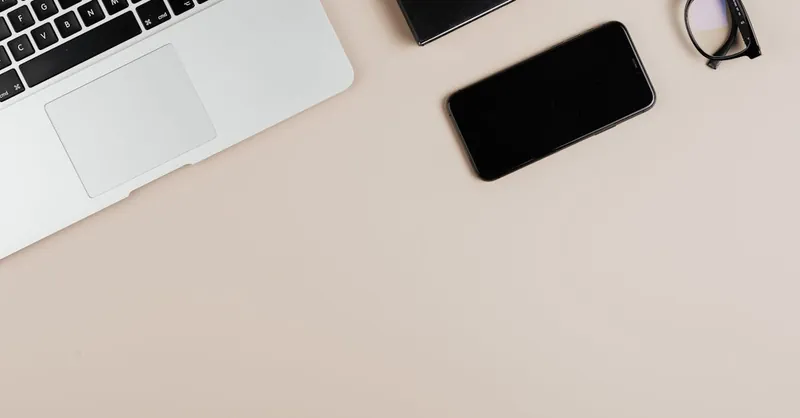
Image courtesy of Photo By: Kaboompics.com
Resources and Tools to Support Your Minimalist Journey
Embarking on a minimalist lifestyle as a busy professional requires ongoing inspiration, guidance, and practical support. Leveraging the right resources and tools can keep you motivated, help you deepen your understanding, and maintain momentum in simplifying your life. Whether you prefer immersive reading, interactive apps, or engaging with like-minded communities, having a curated toolkit attuned to your professional pace ensures that minimalism remains accessible and effective.
Recommended Apps for Minimalism and Productivity
- Todoist – A streamlined task manager that helps organize your to-dos with priority levels and project categorization, perfect for focusing on essential tasks without overwhelm.
- Forest – A productivity app that uses a gamified focus timer, encouraging you to stay off your phone and concentrate during work blocks.
- Notion – An all-in-one workspace combining notes, tasks, and databases, customizable enough to build minimalist project and life management systems tailored to your workflow.
- Simplifi by Quicken – For minimalist finances, this app tracks spending and budgets simply, helping you align your money habits with your values without complexity.
- Unroll.Me – Helps declutter your inbox by consolidating newsletters and subscription emails, reducing digital noise and improving email management.
Must-Read Books on Minimalism and Simplification
- Essentialism: The Disciplined Pursuit of Less by Greg McKeown – A foundational book emphasizing how to focus on what is truly important professionally and personally.
- Digital Minimalism by Cal Newport – A practical guide to managing technology use intentionally, which resonates deeply with busy professionals battling digital distractions.
- The Life-Changing Magic of Tidying Up by Marie Kondo – While focused on physical decluttering, it offers mindset shifts valuable for both home and workspaces.
- Deep Work by Cal Newport – Explores strategies to cultivate focused, distraction-free work—key to minimalist productivity.
- Atomic Habits by James Clear – Provides actionable techniques for building sustainable habits, essential for maintaining a minimalist lifestyle long-term.
Online Communities and Support Networks
- Minimalists Subreddit (r/minimalism) – A vibrant, supportive space to share minimalist challenges and successes, perfect for receiving peer advice and staying motivated.
- Becoming Minimalist – A popular blog and community offering inspiration, practical tips, and insights specifically geared toward simplifying life with intention.
- No Sidebar – An online community blending minimalism with productivity, ideal for busy professionals pursuing simplicity across work and life.
- The Minimalists Podcast – Audio content featuring discussions about simplifying various life domains, accessible for busy schedules.
- LinkedIn Groups on Productivity and Minimalism – Professional forums where you can network with others who share minimalist productivity goals, exchange resources, and find accountability partners.
Integrating these apps, books, and communities into your minimalist journey provides continuous learning and reinforcement, ensuring you stay aligned with your values while navigating the complexities of a busy professional life. By consistently engaging with trusted resources tailored to your needs, you can sustain clarity, optimize productivity, and foster a lasting minimalist mindset that fuels both personal and career growth.
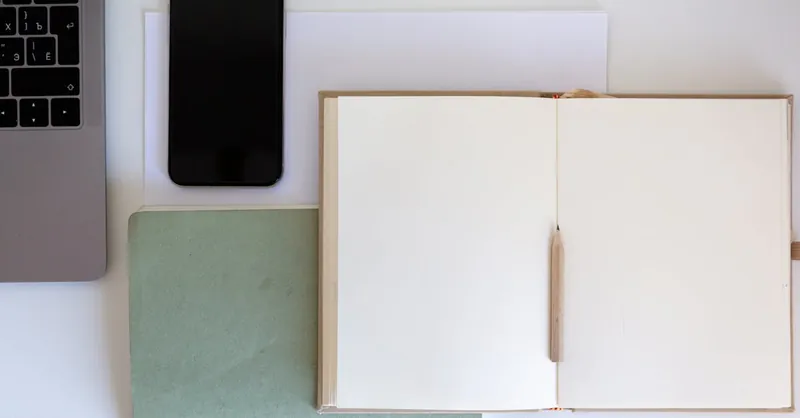
Image courtesy of Tatiana Syrikova
